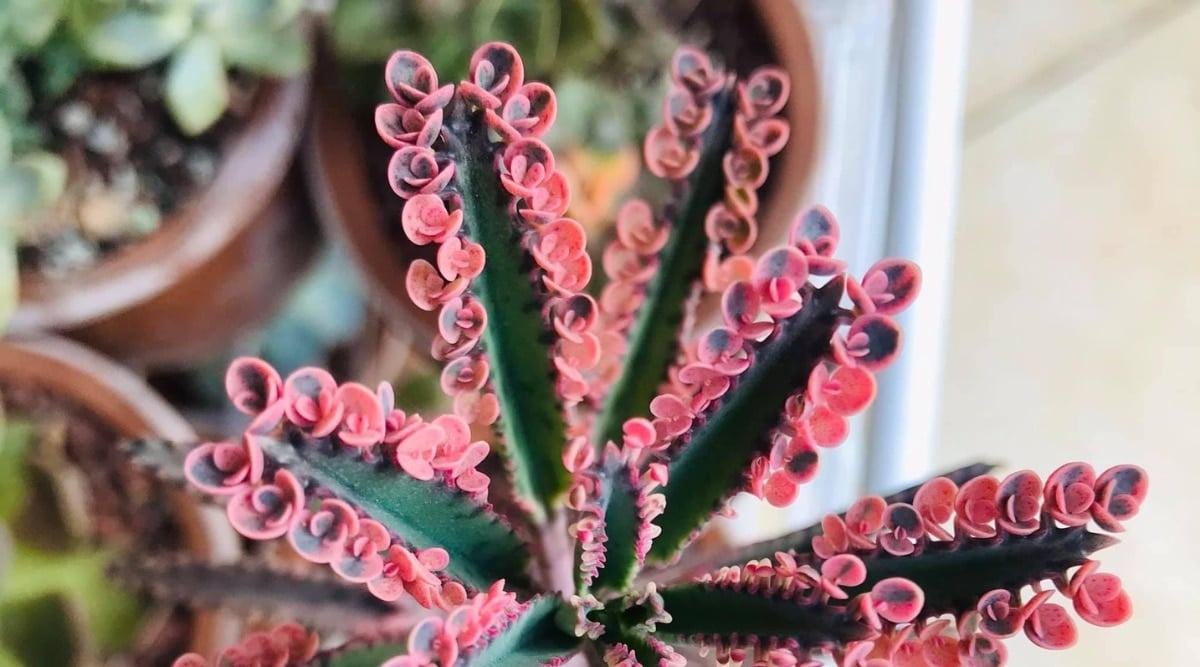Delve into the unique aspects of Kalanchoe ‘Pink Butterflies’ that make it a must-have succulent in your garden!
Cacti & Succulents
Top 11 Advantages of Cultivating Kalanchoe ‘Pink Butterflies’
Considering the vast variety of Kalanchoe species, every gardener can find a suitable match. Let’s focus on the captivating traits of growing kalanchoe ‘Pink Butterflies,’ a standout selection.
This distinctive pink succulent boasts vibrant colors with charming butterfly-like plantlets nestled along the edges of its slender green leaves. These plantlets, showcasing pink hues due to the absence of chlorophyll, are beautifully variegated with shades of green upon closer inspection.
Although not the easiest succulents to nurture due to delicate plantlets and finicky growth tendencies, there are numerous compelling reasons to nurture them. Let’s dive into the motivations for sowing this exquisite plant.
Thrives in Arid Conditions
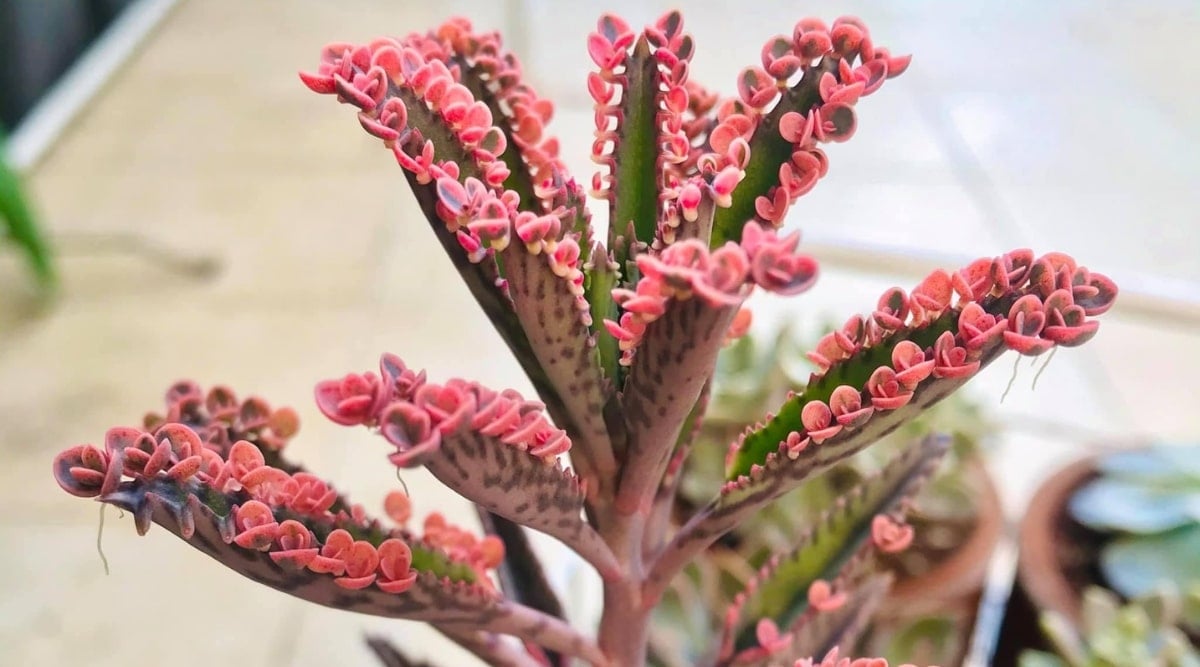
Kalanchoe ‘Pink Butterflies’ displays excellent resilience in dry climates, withstanding drought conditions admirably. Optimal watering involves deep, infrequent sessions, allowing the plant’s deep-root system to access water reserves in the soil during arid spells.
Monitoring the soil moisture is essential, ensuring watering occurs once the topsoil dries 1 to 2 inches deep. Prompt action and regular checks prevent overwatering, a common issue leading to complications like root rot.
Adaptability is key during seasonal shifts, recognizing the plant’s reduced water needs in winter dormancy and heightened thirst in summer heat. Adjust watering frequency accordingly, especially in arid climates prone to extended hot spells.
For outdoor cultivation, prioritize adequate sun exposure and watering routine adjustments to maintain thriving vegetation, particularly in regions facing prolonged heat and dryness.
Thrives in Bright Light
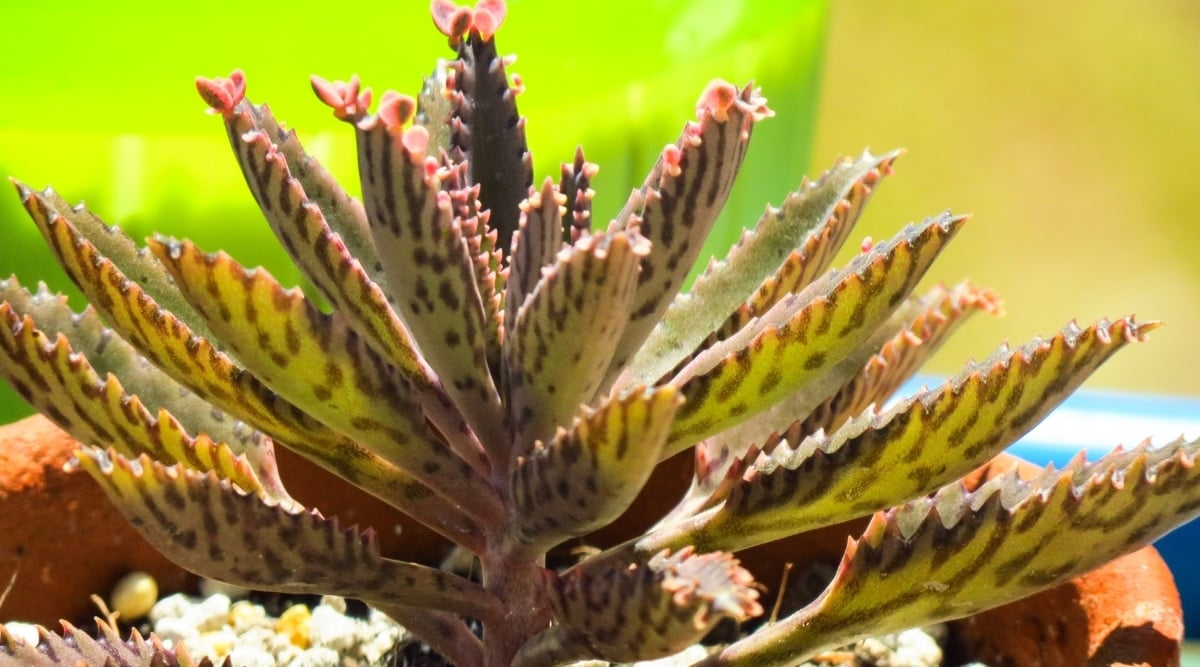
Unlike several shade-seeking houseplants sensitive to direct sun exposure, Kalanchoe ‘Pink Butterflies’ revels in abundant sunlight, favoring higher light intensities.
Positioning the plant near east or west-facing windows maximizes sunlight while shielding it from scorching south-facing rays, ensuring optimal light conditions for thriving growth.
While the succulent handles elevated temperatures well, moderation is essential during extreme heatwaves, warranting periodic shading to prevent stress under prolonged intense sunlight.
Mitigate sun damage effects promptly by relocating the plant to a milder setting, accompanied by trimming for swift recovery; early detection facilitates successful remedial action.
Thrives in Balmy Conditions
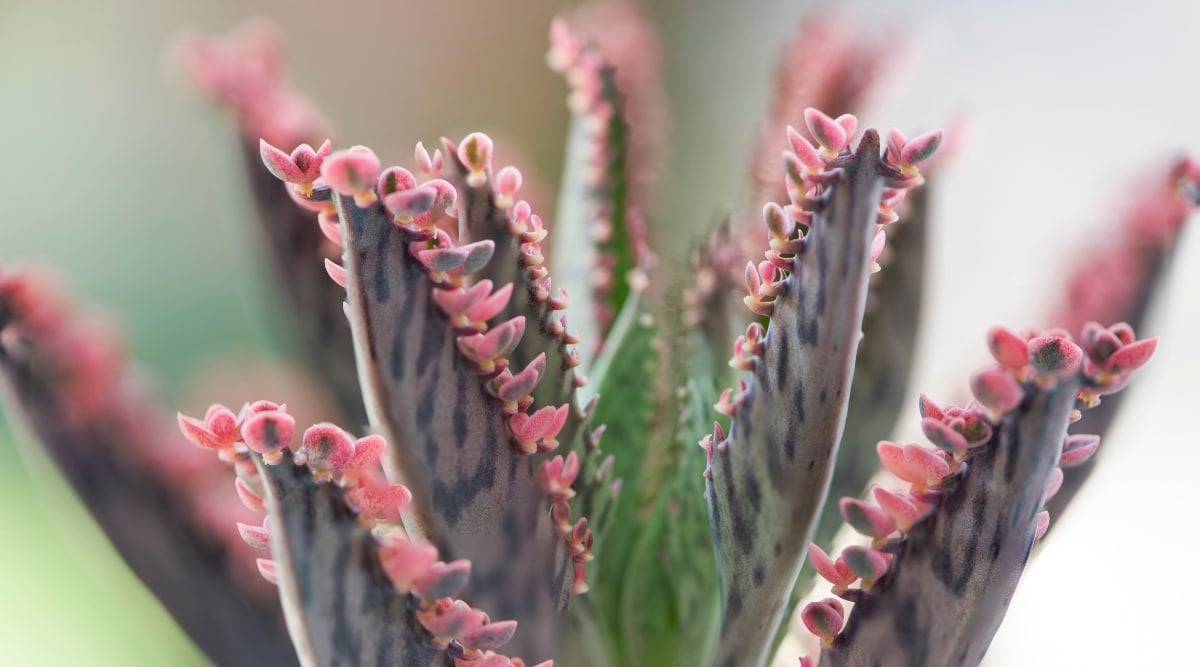
In warmer regions, year-round outdoor growth is suitable for Kalanchoe ‘Pink Butterflies,’ thriving in balmy climates but susceptible to frost damage in chillier settings.
Cold climate residents can enjoy summer outdoor placements by ensuring adequate protection before frosty spells, potentially choosing container cultivation for effortless relocation indoors during colder months.
Preferring indoor environments, this succulent thrives under stable temperatures without sudden fluctuations, maintaining comfort within the 60 to 80 F range year-round.
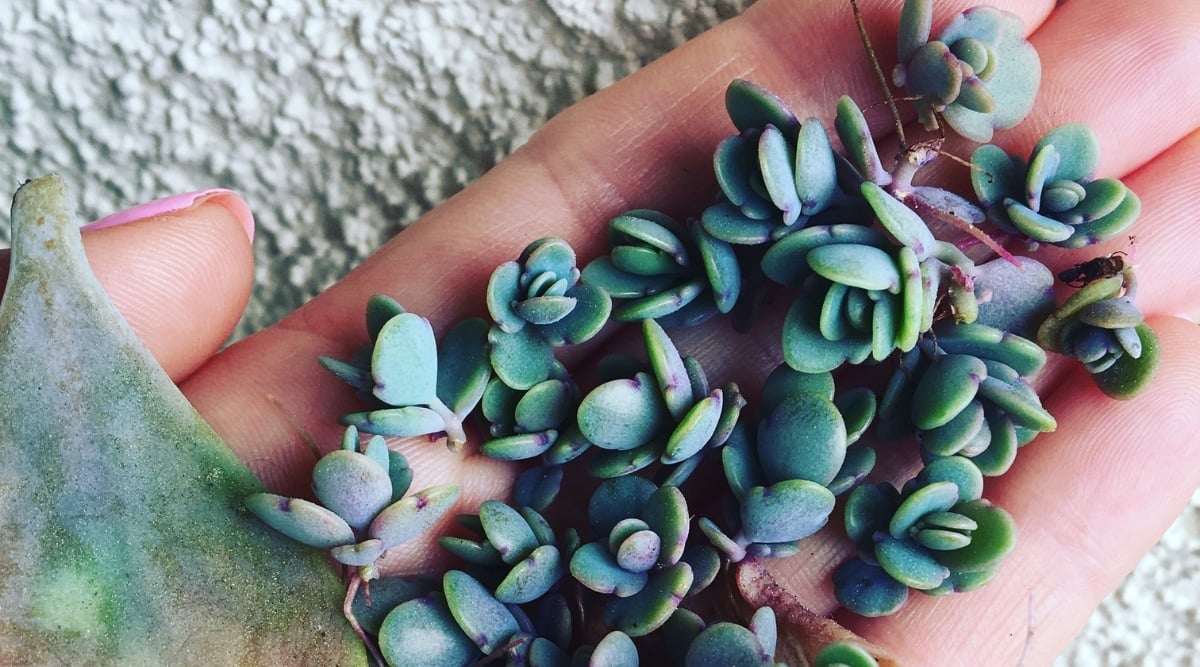
Propagation is effortless thanks to the plantlets that fall naturally from this variety. These plantlets can be utilized to start new plants, offering a simple and successful propagation method.
Once the pink butterfly plantlets have fallen, they can be transferred to their individual pots, positioned in indirect sunlight, and watered frequently to establish roots within 2 to 4 weeks. A gentle tug on the plantlets can confirm root development.
Alternatively, stem cutting offers a reliable propagation method. By cutting off the top 2 inches of the stem with a sharp, sterilized tool, allowing it to callus for a few days, and then planting it in succulent soil, deep watering can lead to successful new plant growth.
While growing from seed is possible, it can be challenging, primarily due to seed availability. The patience required for seed-grown plants to mature and be transplanted into a permanent container is essential. However, with persistence, seed cultivation can be accomplished.
It Loves Coarse Soils
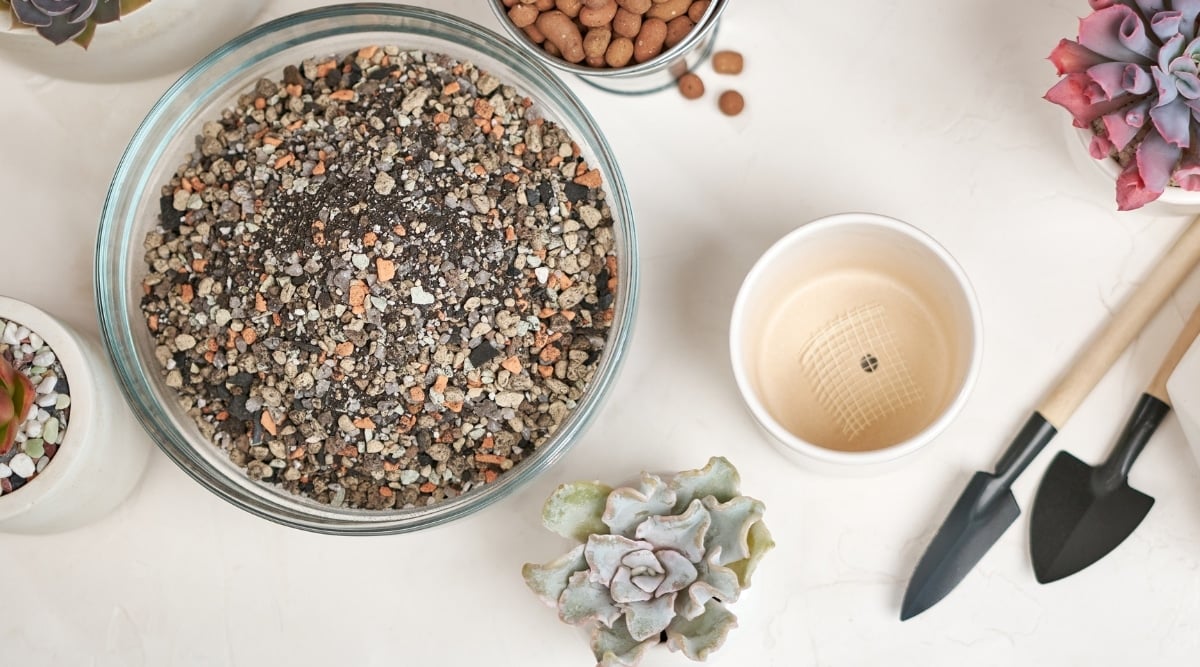
If growing succulents outdoors year-round in your climate is feasible, this variety’s preference for coarse soils makes it an excellent choice. It thrives in sandy, gravelly conditions, which are typically challenging for many plants.
For successful growth, well-draining soils are crucial, and many commercial succulent or cactus soils containing sand or perlite are suitable options. Adding sand, gravel, or perlite to homemade soil mixtures can also promote proper drainage.
Unique Leaves

One of the main attractions of growing kalanchoe ‘Pink Butterflies’ is its distinctive appearance. Unlike traditional green succulents, this variety adds a vibrant splash of pink to any collection, with the pink plantlets creating a striking contrast.
The name of the plant derives from the appearance of tiny pink plantlets resembling resting butterflies along the leaf edges. These pink plantlets exhibit variegation with vibrant green hues mixed in.
Due to the absence of chlorophyll, which is present in the larger leaves for photosynthesis, the pink plantlets bloom into tiny pink flowers during the fall season.
Height
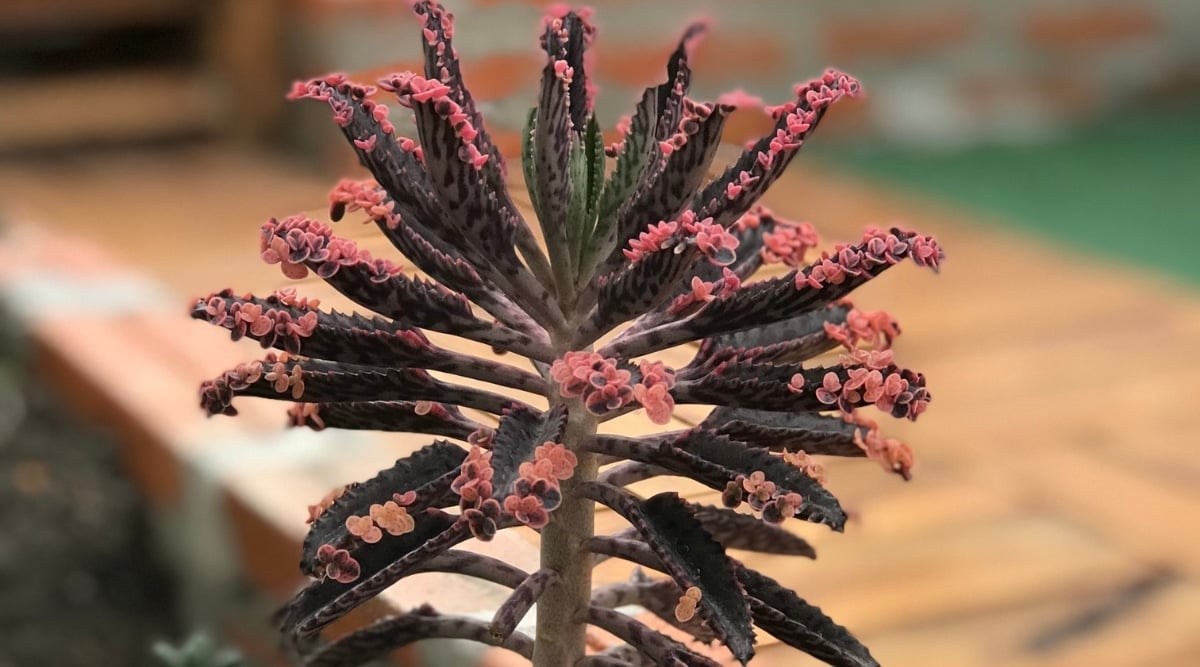
While many succulents stay low to the ground, this variety can grow anywhere from 6 to 36 inches tall, adding vertical interest to succulent displays. Pairing well with other kalanchoe varieties and low-growing succulents enhances its visual appeal.
Providing adequate sunlight, water, and soil is essential for encouraging taller growth. Any imbalance in these factors may stress the plant, making it more susceptible to diseases or pests.
Rarely Repot
